pDC-like cells are pre-DC2 and require KLF4 to control homeostatic CD4 T cells
- PMID: 36827419
- PMCID: PMC10165717
- DOI: 10.1126/sciimmunol.add4132
pDC-like cells are pre-DC2 and require KLF4 to control homeostatic CD4 T cells
Abstract
Plasmacytoid dendritic cells (pDCs) have been shown to play an important role during immune responses, ranging from initial viral control through the production of type I interferons to antigen presentation. However, recent studies uncovered unexpected heterogeneity among pDCs. We identified a previously uncharacterized immune subset, referred to as pDC-like cells, that not only resembles pDCs but also shares conventional DC (cDC) features. We show that this subset is a circulating precursor distinct from common DC progenitors, with prominent cDC2 potential. Our findings from human CD2-iCre and CD300c-iCre lineage tracing mouse models suggest that a substantial fraction of cDC2s originates from pDC-like cells, which can therefore be referred to as pre-DC2. This precursor subset responds to homeostatic cytokines, such as macrophage colony stimulating factor, by expanding and differentiating into cDC2 that efficiently prime T helper 17 (TH17) cells. Development of pre-DC2 into CX3CR1+ ESAM- cDC2b but not CX3CR1- ESAM+ cDC2a requires the transcription factor KLF4. Last, we show that, under homeostatic conditions, this developmental pathway regulates the immune threshold at barrier sites by controlling the pool of TH17 cells within skin-draining lymph nodes.
Figures
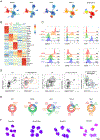
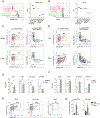
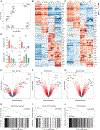
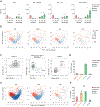
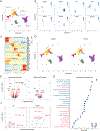
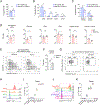
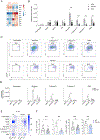
References
-
- Cabeza-Cabrerizo M, Cardoso A, Minutti CM, Pereira da Costa M & Reis e Sousa C Dendritic Cells Revisited. Annu Rev Immunol 39, 131–166 (2021). - PubMed
-
- Shortman K & Liu YJ Mouse and human dendritic cell subtypes. Nat.Rev.Immunol 2, 151–161 (2002). - PubMed
-
- Banchereau J et al. Immunobiology of dendritic cells [Review]. Annual Review of Immunology 18, 767–811 (2000). - PubMed
Publication types
MeSH terms
Substances
Grants and funding
LinkOut - more resources
Full Text Sources
Molecular Biology Databases
Research Materials
Miscellaneous

